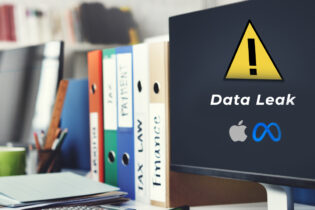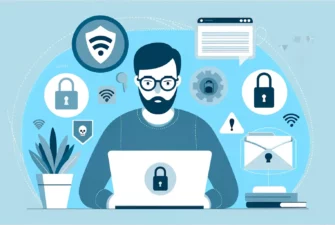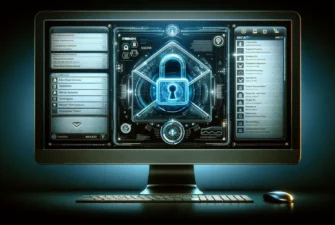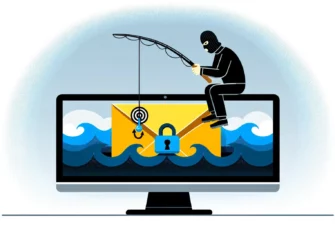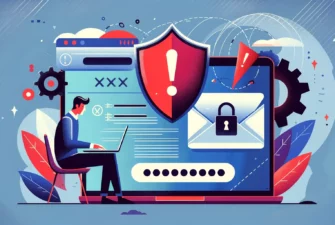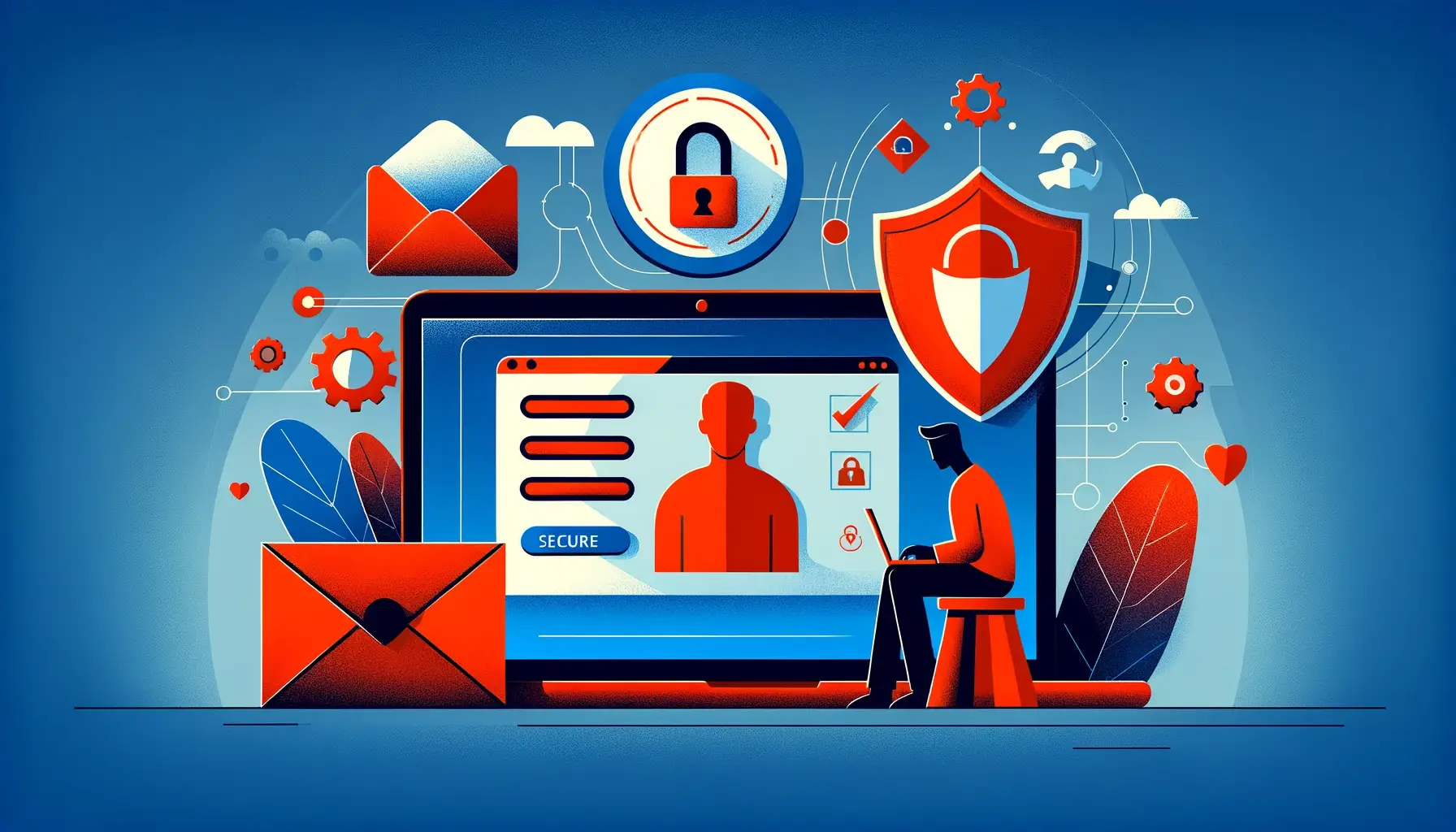
Ever wondered how secure your email really is? It’s not as foolproof as you might think. With so many data breaches happening daily, taking your email security for granted may backfire when you least expect it.
Thankfully, there’s a quick and efficient solution to protect your personal and corporate messages. Enter S/MIME certificates – the key to locking down your email privacy. But what is an S/MIME certificate? How does it work, and why should you use it?
As we unpack these questions, you’ll find that understanding S/MIME certificates is not as complex as it seems, and they’re an essential part of your cybersecurity toolkit.
Table of Contents
- What Is S/MIME?
- What Is an S/MIME Certificate?
- How Does an S/MIME Certificate Work?
- S/MIME Certificate Features
- S/MIME Certificate Benefits
- How to Get an S/MIME Certificate?
What Is S/MIME?
S/MIME, or Secure/Multipurpose Internet Mail Extensions, is a technology that adds a security layer to email messages. It ensures confidentiality, integrity, and authentication of electronic communications. Think of it as a digital envelope that safeguards your email content from prying eyes.
A common misconception is to consider S/MIME a protocol, but it’s not in the traditional sense. Instead, it’s a set of cryptographic conventions and standards that enhance the security of email communication. S/MIME builds upon existing email protocols like SMTP (Simple Mail Transfer Protocol) and MIME (Multipurpose Internet Mail Extensions) by adding encryption, digital signatures, and other security features.
S/MIME uses public-key cryptography, where each user has a pair of keys – a public key for encryption and a private key for decryption. It’s like having a secret code only the intended recipient can unlock.
S/MIME also provides a digital signature, verifying the sender’s identity and ensuring the message hasn’t been tampered with.
What Is an S/MIME Certificate?
An S/MIME certificate is a digital certificate used to secure email communication. It’s a unique piece of digital data that verifies your identity to recipients and ensures that your messages remain private and integral.
When you send an encrypted email, the S/MIME certificate authenticates your identity to the recipient. Essentially, it’s a seal of trust, assuring the recipient that the email did indeed come from you in its original form.
Conversely, when you receive an encrypted email, the sender’s S/MIME certificate allows you to decrypt it and verify the sender’s identity.
A typical S/MIME certificate contains your name, email address, certificate usage, issuance and expiry dates, and the digital signature of the certificate-issuing authority. This certificate is bound to your private key, which you must protect carefully. Losing it is akin to compromising your digital identity, with potentially serious consequences.
How Does an S/MIME Certificate Work?
Imagine sending a letter in a special envelope only the recipient can open. This envelope also includes a unique stamp, ensuring the receiver that no one opened and altered it.
In the digital space, S/MIME certificates work similarly. You get a digital ID from a trusted authority. This ID has your public key and confirms your identity.
When you send an email, your message is secured using the recipient’s public key, ensuring only they can decrypt it with their private key.
Upon receiving an email, the sender marks it with a unique signature using their private key. As the recipient, you verify this signature using the sender’s public key to confirm the email’s authenticity.
In essence, an S/MIME certificate operates as a digital passport. It authenticates your identity, establishes trust, and ensures the confidentiality and integrity of your email communications.
S/MIME Certificate Features
Now, let’s turn our attention to the S/MIME email certificate features. Understanding S/MIME certificates is about recognizing their dual role: encryption and digital signature.
- Email Encryption: S/MIME certificates encode emails into a secure format, ensuring only the intended recipient can decipher the content.
- Digital Signatures: With S/MIME certificates, senders can attach a digital signature to emails, assuring recipients that the email remains unchanged and genuinely comes from the claimed sender.
- Identity Verification: S/MIME certificates validate the identity of email senders, preventing impersonation or phishing attempts.
- Non-Repudiation: S/MIME provides non-repudiation, meaning senders can’t deny sending a message. The digital signature, verified by the recipient, establishes accountability, functioning like a receipt for sent emails.
- Compatibility with Email Clients: S/MIME certificates enjoy support across various email clients. This universal compatibility ensures seamless use of email encryption and digital signatures across different platforms.
- Time Stamping: A timestamp indicates when a digital signature was applied to an email, enhancing accountability and providing a verifiable record of the email’s creation or signing time.
- Built-in Two-Factor User Authentication: THE 2FA enhances security by requiring an additional layer of verification for digitally signed emails.
S/MIME Certificate Benefits
Let’s explore the benefits of S/MIME Certificates. Besides ensuring confidentiality through encryption and providing authentication and integrity. They offer protection against phishing and streamline business communication.
Enhancing Email Security
S/MIME certificates can substantially boost your email security. By verifying that the email sender is who they claim to be, S/MIME certs reduce the risk of hacking attempts and encrypt your email content and documents, ensuring only the intended recipient can read them.
This double-layered protection mechanism makes your email communication much more secure. It’s a powerful tool in an environment where cyber threats are ever-present.
Confidentiality Through Encryption
S/MIME certificates employ the latest asymmetric encryption protocols. When you send an email, the content is encrypted with the recipient’s public key. The recipient then uses their private key, which only they possess, to decrypt the message.
S/MIME also uses a technique known as hashing to ensure the integrity of the message. This way, you can immediately detect any attempts to alter the message during transmission.
Authentication and Integrity
When you use an S/MIME certificate, the recipient’s email client checks it against the certificate authority’s database to authenticate your identity. If it doesn’t match, the email flags the email as untrusted.
Additionally, the certificate contains a unique digital signature. If the email content changes, this signature won’t match, ensuring email integrity.
Thus, an S/MIME certificate not only keeps your communications secure but also verifies your identity and safeguards the content of your emails from tampering.
Protection Against Phishing
When you get an S/MIME certificate, you protect email communications against relentless phishing attacks. This protection comes from the certificates’ ability to authenticate email senders, making it difficult for phishers to impersonate you or your organization. There’s your first line of defense.
Phishers often attempt to trick recipients by forging the sender’s identity, but S/MIME’s authentication feature helps users discern legitimate communications from fraudulent ones. By confirming the sender’s legitimacy through digital signatures, S/MIME prevents users from falling victim to phishing schemes and enhances.
Streamlined Business Communication
Your corporate emails hold sensitive information and company secrets that can’t fall into the wrong hands. S/MIME certs cover your business email security needs by encrypting communication and authenticating its participants.
Moreover, S/MIME certificates comply with FDA ESG standards, crucial for businesses engaging with the Food and Drug Administration, facilitating smooth and secure communication through the FDA’s Electronic Submission Gateways.
How to Get an S/MIME Certificate?
The best place to get an S/MIME certificate is from an official reseller like SSL Dragon. This way, you’re guaranteed the best price and customer support.
First, decide on the certificate type. Do you want to secure your personal emails or corporate exchanges? Business options offer domain control, identity verification, and organization validation.
At SSL Dragon, we’re partners with the best S/MIME certificate providers, offering you the ultimate email protection against data breaches and phishing attacks.
Once you get the S/MIME email certificate, you can install it on most email clients. Check our S/MIME installation tutorial for Outlook for a quick configuration.
Bottom Line
An S/MIME certificate secures email communication. It encrypts your messages and attachments, ensuring they can’t be tampered with en route to their destination. It also authenticates your identity, boosting trust and predictability.
Now that you know what an S/MIME certificate is, how it works, and why it’s so important, it’s your turn to secure your online correspondence
So, don’t delay – get your S/MIME certificate today and step up your email security game. It’s a move you won’t regret.
Save 10% on SSL Certificates when ordering today!
Fast issuance, strong encryption, 99.99% browser trust, dedicated support, and 25-day money-back guarantee. Coupon code: SAVE10























